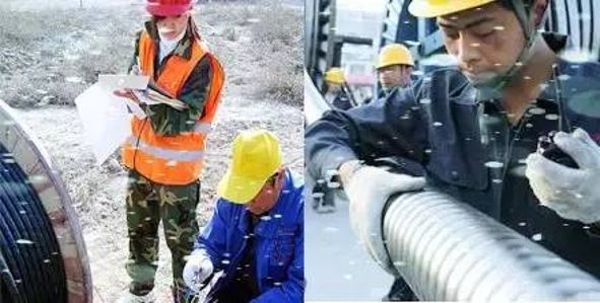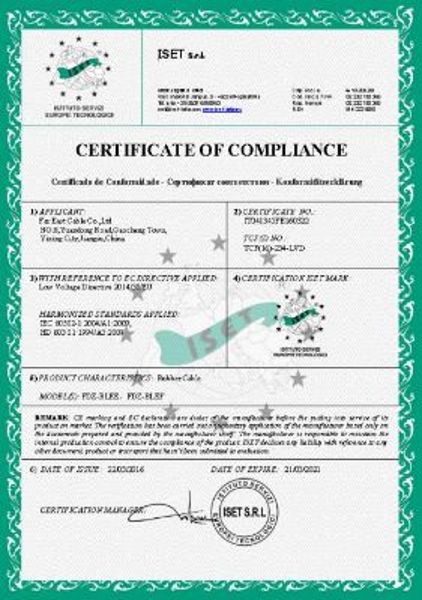Far East Cable sends you a winter cable laying guide
The footsteps of the Spring Festival are fast approaching,
The days of reunion are drawing near,
Accompanied by severe cold and blizzards.
As of today,
Places such as Henan have issued blue alerts for blizzards,
Posing significant challenges to the provision of electric power supply.
As the Spring Festival approaches, every household is immersed in the warm atmosphere of returning home to reunite. In this joyous moment, Far East Cable, as a solid backing for electric power security, is committed to providing stable and reliable electricity support for every household, ensuring a warm and happy reunion year for every family.
To ensure the safety and efficiency of cable laying, Far East Cable has specially launched a winter cable laying guide to provide users with practical operating suggestions and precautions. From selecting cable products suitable for winter use, formulating detailed plans and solutions, to enhancing the training of construction personnel, paying attention to protection during the laying process, and carrying out necessary maintenance and checks, Far East Cable provides comprehensive support and services to users.
Cable Selection
According to the requirements of the “Electric Power Engineering Cable Design Standards,” for areas where the annual minimum temperature is below -15℃, cables with cross-linked polyethylene, polyethylene, cold-resistant rubber insulation, and sheath should generally be selected. If cables with polyvinyl chloride (PVC) insulation and sheath are chosen, cold-resistant requirements must be added, opting for cold-resistant PVC insulation and sheath. Where the minimum ambient temperature is below -25℃, cables suitable for the user’s actual application environment should be designed.
Ordinary PVC sheathed cables are suitable for use in areas above -15℃ and require laying and construction above 0℃, with insulation options including PVC, PE, XLPE, etc.
For areas where the temperature is above -30℃, it is recommended to use a PE sheath, or alternatively, cold-resistant PVC sheath or nitrile composite sheath can be used, with laying and construction above -10℃ and insulation options including PE, XLPE, etc.
For areas where the temperature is below -30℃, it is recommended to use a PE sheath and perform laying and construction above -20℃, with insulation options including PE, XLPE, etc.
If conditions do not permit and cable laying must be carried out in a cold environment, it is recommended that users make full preparations before laying the cable. After the cable laying path has been inspected and accepted and the necessary tools and personnel are ready, the cable to be laid should be placed in an insulated environment for at least 24 hours, with the temperature maintained above 15℃. Then, choose to lay the cable during the sunny midday hours, striving to ensure the work is completed within 2 hours after the cable leaves the insulated environment.
Installation and Laying
During the cable laying process, to ensure the cable’s safety and performance, it is necessary to follow professional operating standards. Firstly, handling the cable gently is a basic requirement. When laying manually, care must be taken not to drop the cable onto the ground directly. Special protective measures should be taken at stress points such as bends and slopes to prevent the cable sheath from being damaged by impacts.
In winter laying, effective preheating and insulation measures are needed to ensure the normal operation of the cable. Preheating time varies with different indoor temperatures. For example, when the indoor temperature is 5℃ to 10℃, preheating takes approximately three days and nights; at a temperature of 25℃, preheating time is reduced to one day and night; and at 40℃, only 18 hours are required. For cables that need to be exposed in a severe cold environment, professional equipment such as warm air blowers should be used for uniform heating when necessary to prevent damage due to low temperatures. However, it is important to note that preheated cables should be laid within the specified time to avoid unnecessary loss.
After laying
After laying is completed, a comprehensive check should be made on the installed cables. The check includes cable type, specifications, length entering equipment, and total quantity. In case of any anomalies, such as damaged or cracked sheathing, prompt repair measures should be taken. Only after verification, can the fixing of the cables be carried out. If cable tie technology is used to fix the cables, they should be checked and organized after a bundle has been laid, and then fixed with special ties before proceeding to the next bundle of cables.

Far East’s cable laying guide is not only suitable for professional construction personnel but also for home users. Whether you are renovating a new home or repairing old lines, we provide you with detailed laying steps and safety tips, allowing you to complete cable laying work safely and smoothly at home.
Far East Cable
Far East Cable has developed a specially designed cold-resistant cable - soft aluminum conductor halogen-free low smoke eco-friendly cold-resistant wind turbine tower room sheath electric power cable, for use in transmitting voltage of 3.6/6kV fixed laying sections of wind turbine tower rooms. The product has excellent cold resistance features, as well as lightweight, cold resistance, oil resistance, aging resistance, non-flammability, UV resistance, corrosion resistance, and other excellent performance, which can ensure high-quality operation and transmission of cables under low-temperature severe cold conditions. Notably, this product is 40% lighter in weight and 40% lower in cost than copper cables with the same current-carrying capacity. It employs a non-insulated shielding structure, making the installation more convenient. Rubber insulation sheath material is used to improve the cable’s flexibility, meeting environmental, low-smoke, and halogen-free requirements, and withstanding temperatures as low as -55℃, suitable for use in various severe cold regions.

Moreover, Far East’s wind turbine tower room aluminum core cold-resistant wear-resistant sheath cable has even passed CE certification, effectively ensuring the quality and safety.
Far East Cable will serve you wholeheartedly,
Committed to lighting up thousands of homes,
Ensuring a reunion year for every household.

